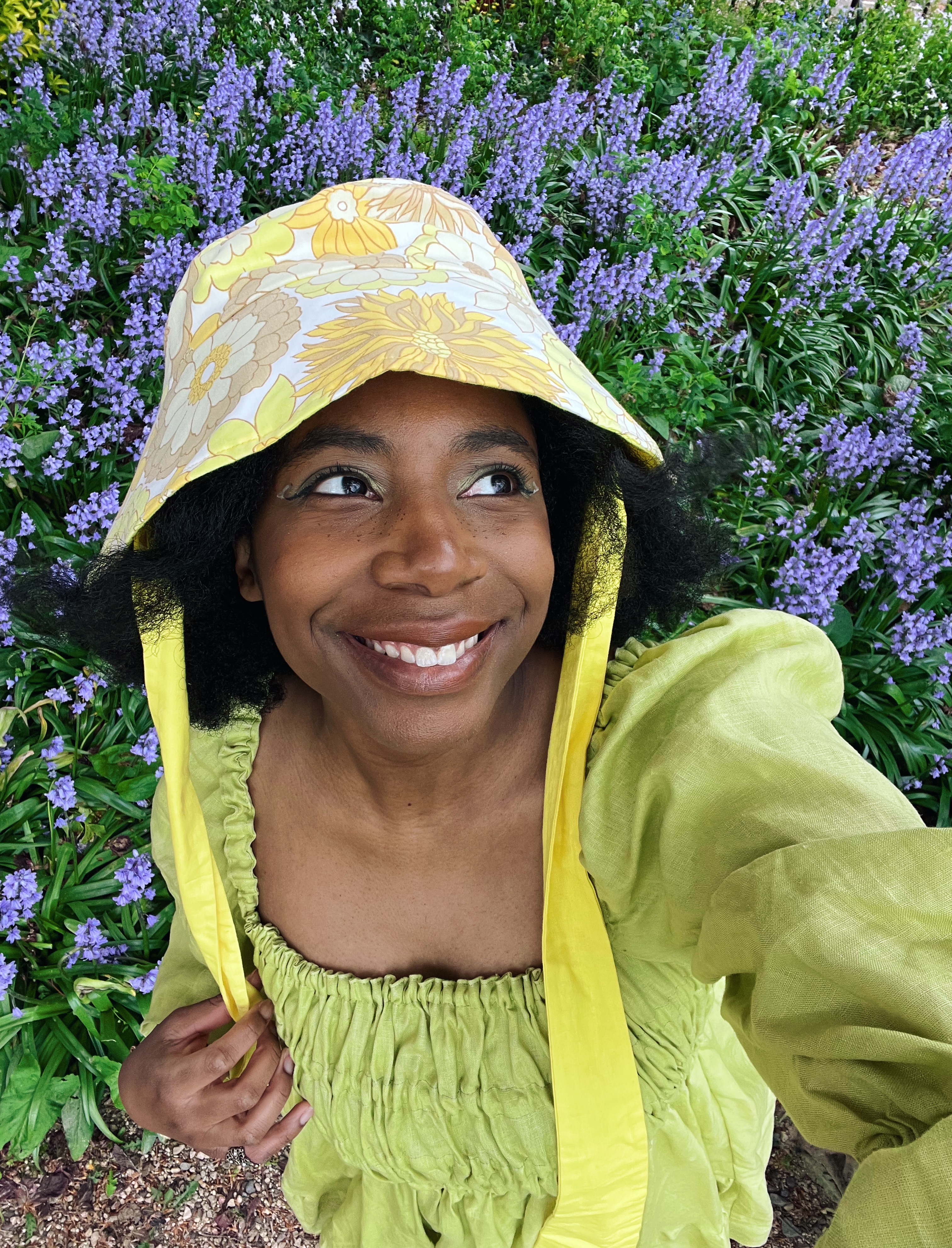Dominique Palmer is a 23-year-old Youth Climate Justice Activist, environmentalist, storyteller, writer, and slow fashion advocate, whose work is focused on intersectional climate action and utilising creative arts like music to unite people.
There is beauty everywhere, all around us. I love to notice the little details, looking up to the birds and hearing their birdsong, looking at the types of trees around me, and noticing the flowers blooming again. We are nature defending itself, and there is a lot we can learn from the beautiful world around us. Tree networks show us community and interdependence, and the season of Spring reminds us that the flowers will always bloom again, they are a symbol of resistance. I find so much joy in spending time outdoors, and being present in nature. There is beauty in the intrinsic value of nature, and the life that it gives us. The earth is our life system, and we must defend it.
Connecting to nature is important for our well-being, and it shapes how we protect it. Fashion and our wardrobes can be part of caring for the environment and acting on our connection to nature. Slow Fashion and Climate Justice are intrinsically linked in creating a system which works in harmony with our planet, and people. To me, sustainability is a love letter to the earth. Love is a verb, which means that we need to take action. Our wardrobes can be part of creating a green and just future, and one where we appreciate the beauty of nature, and the craft that goes into every thread of our clothes.
I have discovered brands that act on their love for nature. Vasiliki Atelier, a women-led brand, creates “global, feminine, artisanal and confident” clothing that has sustainability at its core and highlights crafts from across the world, to celebrate those who create the clothes. They are transparent about sustainability, and create small collections with sustainable fabric suppliers and natural fibres whenever possible, for a lower environmental impact. I find their pieces beautiful and it shows that style does not need to be compromised for conscious clothing.
I also discovered Studio Courtenay, a British-made fashion and homeware brand that only uses deadstock fabrics to create pieces. I love wearing the bucket hat which is perfect for Spring due to its cottagecare-esque pattern and necktie. It is crafted from high-quality vintage floral cotton deadstock fabric. I love vintage pieces and upcycling, and it is great to see a brand create high-quality, fashionable pieces from deadstock fabric, which would have otherwise gone to landfill or sat somewhere unloved. There are already enough clothes on the planet to dress the next six generations, so, pieces which are not producing virgin raw materials are something we need more of.
Through Wolf & Badger I have found brands that are putting artisans and the environment at the heart of what they do, and creating beautiful pieces at the intersection of sustainable and ethical fashion. I have used the guarantees features online such as ‘Happy World,’ ‘Happy Worker,’ and ‘Low Impact’ to discover brands. Now it is easier than ever to support fashion brands who are pioneering circular and sustainable fashion, and respecting those who make our clothes.
This is about more than just fashion, it is about sustaining the one planet we live on and respecting our natural resources. It is also about empathy, and love, for nature and the people who are part of crafting our clothes at every stage, from farm to wardrobe. Fashion does not have to cost the earth or people, and it is interconnected with so many issues that I focus on as a climate justice activist. The fashion industry is linked to the over-consumption of 80 billion-150 billion clothes produced each year, environmental degradation and exploitation of our natural resources and workers.
To create a future where we see beauty in nature and respect it, we need to curate our wardrobes mindfully, and ask: what happened to the planet for my clothes? Who crafted this and farmed the cotton? How far did this travel? We also need to care for the clothes we have and make our loved pieces last.
Fashion can be part of creating a green future in which we have Climate Justice, and there is hope. With action comes hope, and the choices we make today will change the world.
Shop the article
Read more
ENVIRONMENT
Diving Deep With Jorge Cervera Hauser
Jorge Cervera Hauser is an underwater and wildlife photographer, two-time...
ENVIRONMENT
Slowing Down With Summer Dean
Summer Dean is the founder and creator of her climate and slow fashion blog,...
ENVIRONMENT
Balancing Fashion and Climate with Tori Tsui
Tori Tsui is an author, climate justice and mental health activist. Having...
ENVIRONMENT
Diving Into Marine Conservation With Inka Cresswell
Inka is an underwater photographer, marine biologist and ocean...
ENVIRONMENT
How to Eat Fish Sustainably to Help Our Planet, with Prawn on the Lawn
Rick Toogood was born on the Channel Islands surrounded by fish. His mother...



